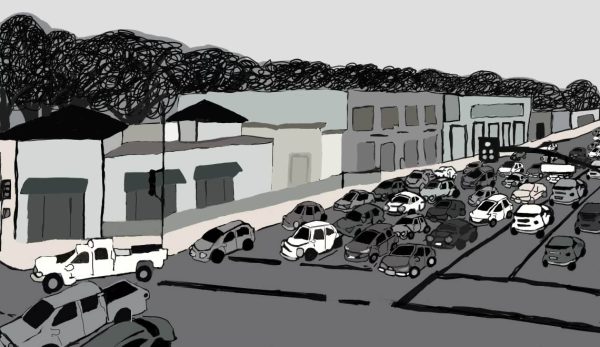Saving ourselves
March 25, 2021
Every morning before I went to school, I announced the daily weather forecast and the number of days until it would rain to my siblings. Of course, I started this tradition in elementary school in the middle of the 2011-17 California drought, so rain was quite a rare occurrence. However, in middle school, I began to notice a surprising new trend. Instead of being disappointed by the lack of rain on the forecast, I became increasingly concerned about looming days with extremely poor air quality as a result of catastrophic local fires.
After I learned that wildfires in California were increasing in severity and intensity as a result of climate change, I made modifications to my daily routine, which included reading all of the environmental news that I could find and keeping track of the ever-increasing evidence of global warming.
In 2020, the climate action movement made considerable progress, but it simultaneously faced various setbacks.
The year began with the continuation of the Australian wildfires of late 2019, which affected about three billion animals and caused the deaths of almost 500 people, according to The Guardian and BBC News, respectively. As the year progressed, the world witnessed the most active Atlantic hurricane season on record, Californians experienced the largest wildfire in state history and carbon dioxide levels reached their highest point ever over the summer, according to the Washington Post. In perhaps the most telling example of the immediacy of climate change, 2020 is essentially tied with 2016 as the warmest year in human history, NASA reported.
In other words, we are already seeing the effects of climate change as temperatures rise and natural disasters become increasingly severe, which means we not only have to prevent the worst impacts of climate change from occurring, but we must also adapt to the effects of climate change in a warming world.
Fortunately, as governments turned their attention to economic recovery from the pandemic, many began to consider fighting climate change as a national priority. For example, the European Union included a goal of achieving carbon neutrality by 2050 in its economic recovery plan, with 30% of the budget going towards fighting climate change.
Countries in East Asia also signaled their commitment to taking climate action last year, with China and Japan setting goals to reach net zero emissions by 2060 and South Korea pledging to reach net zero emissions by 2050. At the end of 2020, the United Nations, United Kingdom and France held the virtual Climate Ambition Summit in December, committing 76 countries and member states of the European Union to pledge more ambitious emissions reductions and other climate-friendly policies.
Nevertheless, any positive strides for climate action this year have come too late and have not gone far enough. With every passing year, climate change increasingly becomes a major policy issue, but the window for taking effective climate action narrows.
In 2021, 63 years after geochemist and oceanographer Charles Keeling first observed a steady upward trend in the carbon dioxide levels in Earth’s atmosphere and discovered the Keeling Curve, carbon dioxide levels have increased by over 100 parts per million (ppm). We have less than a decade until our carbon budget permanently runs out, leaving us to experience the worst consequences of climate change. Why, only now, are we taking widespread action?
Whereas 30 years ago we could afford to simply protest plastic bags or straws, we no longer have the luxury to act as though we are trying to save the Earth out of the goodness of our hearts.
The Earth has existed for billions of years before us, and it will continue to exist for billions of years after we have made it inhospitable for our species and others alike. At this point, we’re fighting climate change not only to save our planet, but to save ourselves.












































